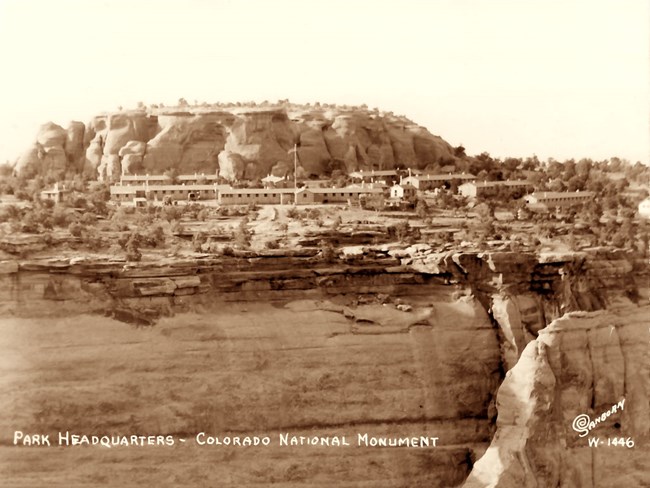
Sanborn Colorado National Monument was one of the first parks to take advantage of the Civilian Conservation Corps. The executive order was signed on April 5, 1933, and men were at the monument setting up the first of three camps on May 21, 1933. 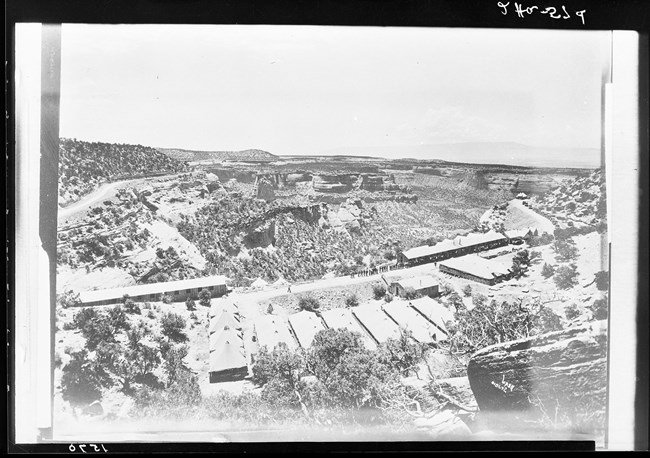
NPS Photo.
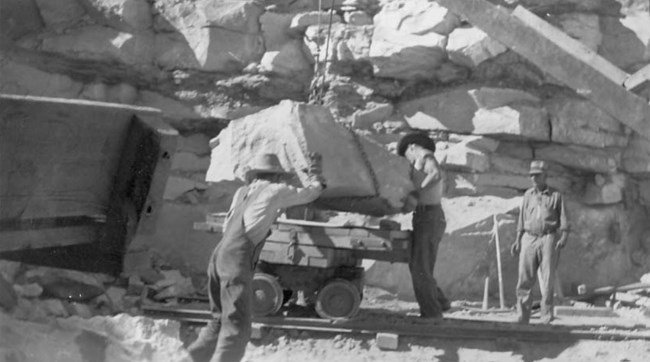
While some of the work was done with explosives, most of the movement of rock and dirt was done with hand tools. CCC projects were usually designed for heavy unskilled labor because they were designed to put a large number of men to work for a long period of time. In some areas rock needed to be removed and the material was moved to areas which needed to be built up. Over 8 years approximately 20 miles of the road, over 200 culverts, 3 tunnels and 6 overlooks were fit/sculpted into the landscape to best show off the magnificent mesas and canyons. The work was not without danger. On December 12, 1933 nine men were killed in a rockslide and collapse. All of these men were Local Experienced Men who lived in the community. They were clearing debris after explosive work which had been designed to carve a “half-tunnel.” The overhanging rock collapsed. 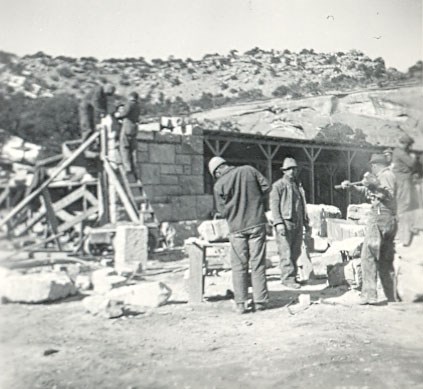
MR Douglass 1938 Photo Collection ProjectsThe most easily observed aspect of the 1930’s work along Rim Rock Drive is the rock guard walls and the stonework at the overlooks. The rock for these was quarried on site and hand shaped for placement on the walls. Mortar was used to hold the rocks together. These walls line many miles of the road and are found at most of the overlooks. Today’s historic mason crew uses the same techniques these young men learned so many years ago.The CCC also constructed several buildings in the monument. The most readily visible to the public is the Stone House alternatively known as the Saddlehorn Caretaker's Residence or the Custodian's Residence. The style exemplifies National Park Service Rustic Architecture. A couple of interesting details to note are the stone stoop at the front of the building, the recessed, chiseled stone window openings with stone sills and lintels. The garage has mirror image stones on each side. This stone house and accompanying garage is near the visitor center and is now used for administrative offices. Other projects the crews worked on included the Devil’s Kitchen Picnic Shelter, the Saddlehorn Campground and stone comfort station (Loop C), Saddlehorn Utility Area, and the bison fence on the north east side of the monument. Crews also spent time on landscaping, constructing water lines, building fire places for the campground, and other smaller scale projects. 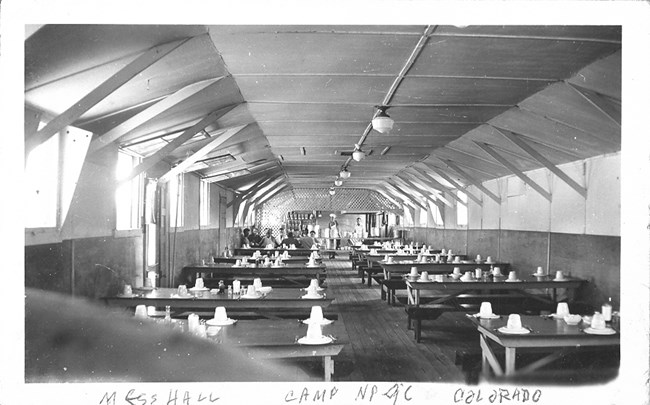
Ottis Littlejohn Collection Camp LifeTypically, men enrolled for a six-month period. They were organized into companies of about 200 men. These companies were then sent to camps scattered throughout the country, administered by the War Department. The men working at Colorado National Monument lived in one or more of 4 camps. The use of the camps changed over the 8 years and some companies used more than one camp during their six months. Camps were usually made up of barracks, offices, mess halls, and an infirmary. Several of the monument camps also included a library and recreation facilities. Education opportunities were an added bonus for many who joined the CCC. In fact, many completed their high school education while serving. Leadership advancement positions with an increase in pay were also offered to hard-workers. Use the slider to compare the same area at Saddlehorn from 1938 to 2021. 

Left image
Right image
|
Last updated: March 6, 2024
